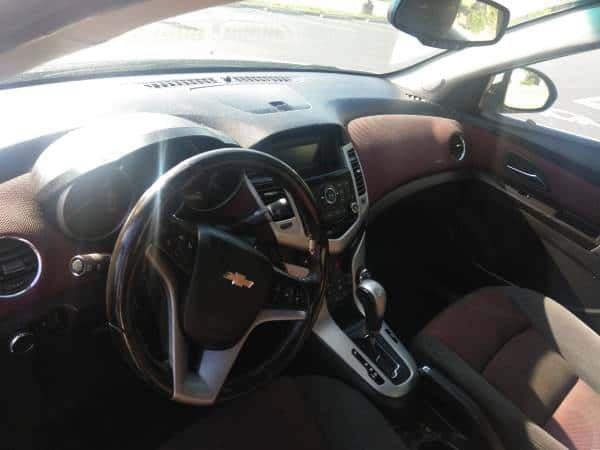Car wont start 2013 Chevy Cruze LT service theft deterrent
Anti-Theft System Diagnostic Service, Test
A visual inspection must always be performed to confirm the presence of aftermarket components, potential collision damage, or areas of concern.
Most systems use a key with transponder, transponder receiver, transponder module and PCM, BCM or stand alone anti-theft module to control system.
The transponder equipped key is inserted into the ignition cylinder and the ignition switch is turned on. The transponder module wakes up and comunicates with the transponder receiver to determine if the appropriate key was used. If the key matches, the transponder module sends a signal to the PCM authorizing vehicle start. If the key does not match, the vehicle will not start and the security lamp will flash.
If vehicle has had a module replacement, a perimeter reset/module pairing, may be required before anti-theft system will operate correctly.
If vehicle is equipped with tow-away protection, antitheft can be sounded when vehicle is being transported.
Some models may have a anti-theft code recorded in radio, retrieve radio code prior to servicing.

Some models may be equipped with a manufacture assisted satellite anti-theft system. Review vehicle owners guide for more information.
- Duplicate customer concern.
- If vehicle is equipped with tow-away protection verify that it is disabled.
- If vehicle is equipped with a interior motion sensor, verify there is nothing hanging from rear view mirror or coat hangers as this can trigger an anti-theft event.
- If vehicle is equipped with a interior motion sensor and auxiliary heating system, one system should be deactivated as auxiliary heating system can trigger a anti-theft event.
- Inspect for aftermarket components, such as a remote start or alarm.
- Verify that hood, luggage compartment, and all doors are fully closed.
- Verify battery is at full state of charge. Inspect battery condition and charge batteries, as required. An overcharge condition may also affect anti-theft system operation.
- Ensure transponder key does not required battery replacement.
- Inspect related fuses and fusible links.
- Inspect condition of anti-theft lamp. If lamp is flashing perform following:
a.Remove any signaling devices or magnetic cards from key-chain and attempt to start.
b.Verify concern is present with each vehicle key. If concern related to one key, reprogram key and reevaluate system operation. If concern is still present with only one key, a replacement key is required.
c.Connect a suitably programmed scan tool to vehicle.
d.Perform network test and verify communications.
e.Inspect state of hood, luggage compartment, and all doors to verify showing closed on scan tool.
f.Verify programming of all keys. A system reset and reprogramming of all keys at one time may be required.
g.Retrieve any anti-theft related diagnostic trouble codes (DTCs) and follow appropriate DTC code diagnostics.
